1952 A40 Devon van
Posted by Chris Graham on 6th July 2023
Chris Cole’s 1952 A40 Devon van hasn’t travelled far in 71 year, and still lives close its Birmingham birthplace, as Mike Neale discovers.
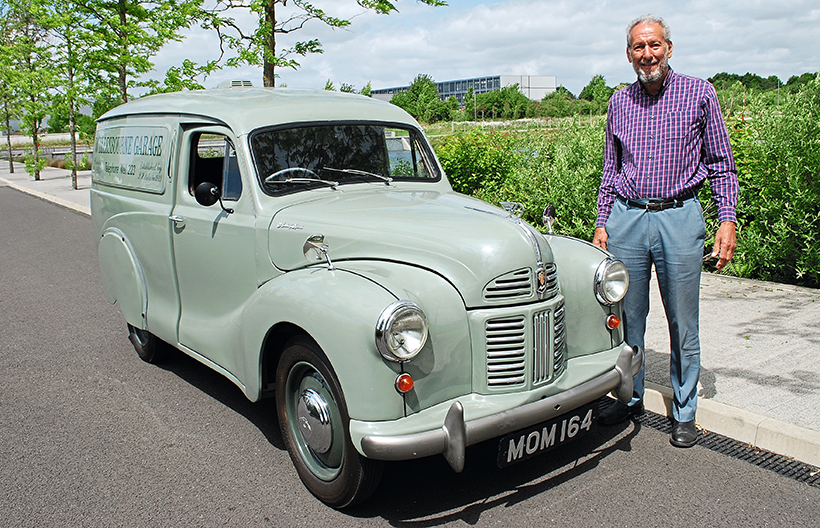
Chris Cole’s 1952 A40 Devon van.
The four-door Austin A40 Devon and two-door A40 Dorset were the first all-new family cars introduced after the war, in autumn 1947.
Commercial versions – 10cwt van, a factory-built 10cwt pick-up and a Countryman estate – arrived in September 1948. The van’s capacity was 116cu.ft. The commercials had bigger, 17in, wheels instead of 16in. of the saloons. Initially, the bonnet and chrome grille were shared with the cars. Lower gear ratios were used and, as was usual on light commercial vehicles at the time, a passenger seat was an optional extra.
The engine was a new Austin 1200cc overhead-valve unit with a power output of 40bhp, hence the A40 designation. Price of the van in grey primer in Great Britain was £422 8s 4d in 1950, or an extra tenner fully painted.
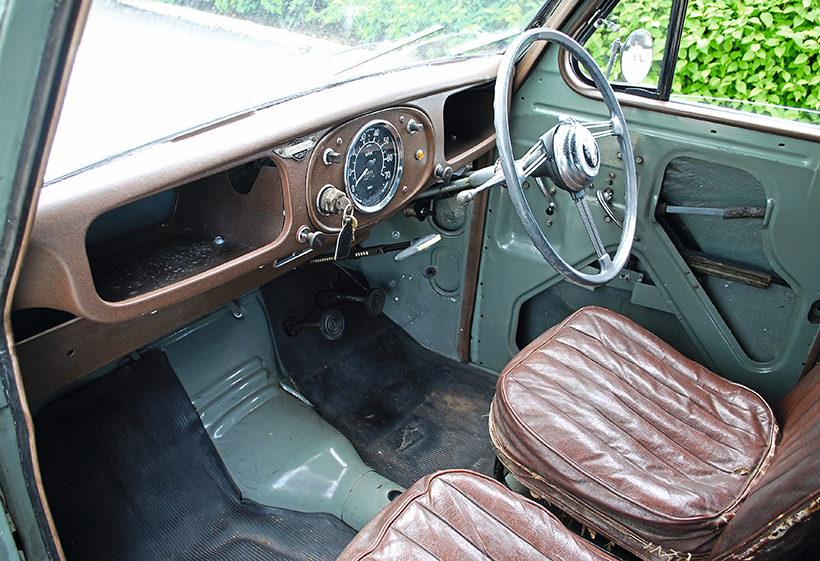
Cab area is substantially original, though a seat retrim is planned.
The Dorset was dropped in October 1949. The Devon was revised in 1951 with hydraulic brakes, a column gearchange instead of floor-mounted and a new dashboard, before being replaced by the A40 Somerset in February 1952.
The commercials continued with the Devon body, however, with the grille having been changed to a painted pressed metal one with alternate chrome bars in May 1951, such vans becoming type code GV3. Initially the smaller grille led to some overheating issues, so additional slots were cut into the front edge of the bonnet from August 1951, to become the GV4 van. Later commercials used some A40 Somerset components, whilst from September 1954, the 1,200cc BMC B-Series engine was fitted, the van type code for which was GV5. Early vans had a plain roof, whilst on later ones three wide ribs were added to the roof to reduce drumming. Production ended in March 1957, by which time some 78,242 vans, 61,818 pickups and 26,587 Countrymen had been built.
Many A40s were exported. The van was sold in the USA as the Austin Panel Delivery, whilst the Countryman was called the Station Wagon. Austin A40s were also assembled in South Africa, Australia, New Zealand, Ireland, Canada, Argentina and Brazil.
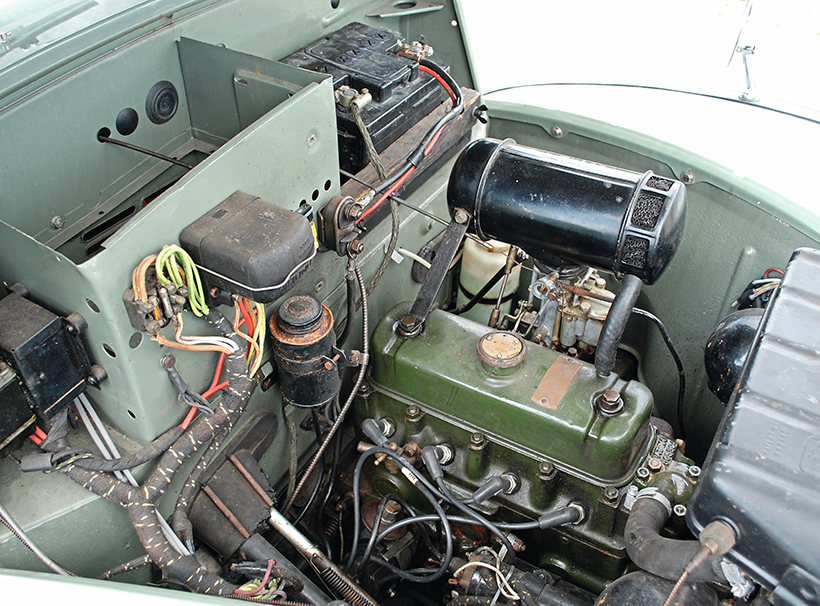
1,200cc OHV engine was the forerunner to the famous BMC B-Series motor.
This 1952 Austin A40 van has had just three owners from new, all within six miles of each another. It started out as a bakery van, for Ettington Bakery in Warwickshire. They sold it to a builder in Pillerton Hersey, (less than three miles away), who kept it until 1981, when it was bought by current owner Chris Cole of Wellesbourne, around five miles away.
Chris’ grandfather, Samuel Henry Cole, established Wellesbourne Garage in 1923. When he died in the 1930s, it was left to his grandmother, who took it on for a while until Chris’ dad and uncle began running it, which they did until they sold it in 1978. At that point, Chris and his wife Joy bought the business, and they then ran it until 2011 when they retired.
Shortly after buying the garage, Chris decided that they needed a company van. He already owned an Austin A40 Somerset and an A70 Hereford Saloon which had needed restoration. That was when the builder came in and asked Chris if he wanted to buy the A40 Van. This he did, as it was in a decent, usable condition, then using it for the business, whose sign-writing it still wears today.
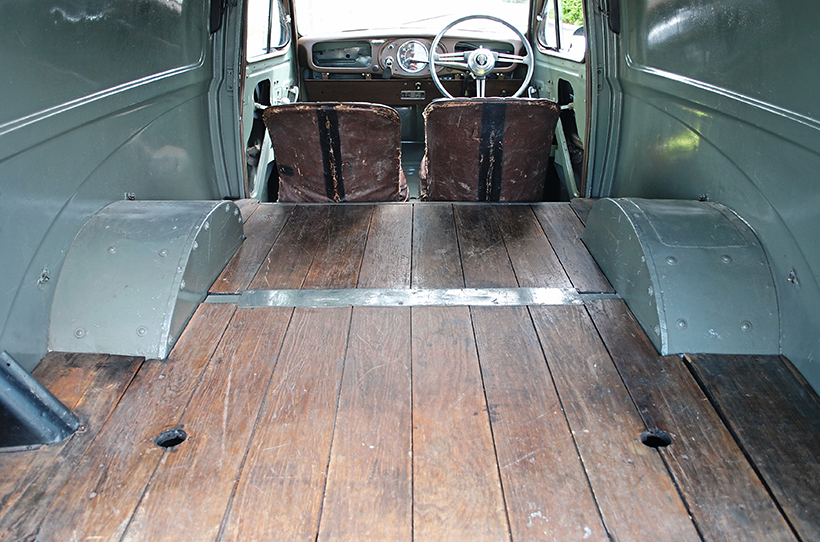
The wooden floor in the loadspace is original. Load capacity was 116cu.ft.
By 1986 however, a bigger van was needed, so they bought a Ford Transit and put the A40 in a friend’s barn. Then in 2009, Chris’ friend wanted to turn the barn into a house so Chris brought it back to the garage and decided to restore it.
The body was taken off the chassis for a bare metal restoration, allowing everything underneath to be repaired and repainted. Chris’ friend John repainted the body in its original colour of Mist Green, a light greyish green and then the sign-writing was re-applied.
The engine, had unfortunately seized and needed rebuilding. The odometer currently shows 98,420 miles, which Chris believes to be correct. A new wiring loom was fitted and the van went back on the road in 2010.
“The wood floor in the back is original, as are the seats,” notes Chris. “A winter project this year is to finish the interior – I need to retrim the seats and fit door cards.”
I noted that the door handles were sitting dead level on the van – Austin Counties door handles being notorious for drooping. I asked Chris how he’d managed this. “I just fitted a rubber O-ring behind the handles and now they don’t droop at all,” he explains. So, it’s really that simple.
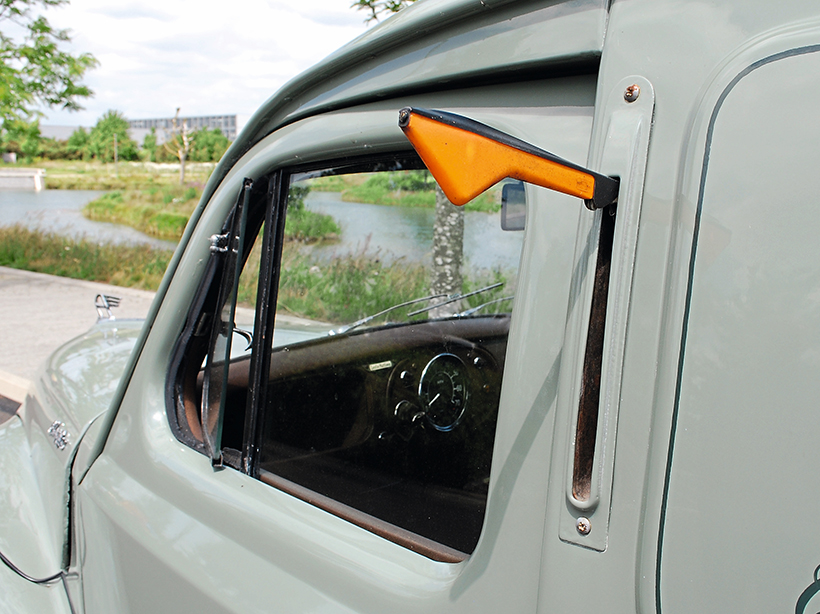
Trafficators are still operational, though flashing direction indicators have been added for safety.
I asked Chris what it was like out on the road. “It now has a saloon differential from an Austin Somerset fitted, so it is not as low geared as it would originally have been. It cruises at about 50mph quite happily, does about 28mpg and the brakes work fine.”
“I’ve added flashing indicators for safety, and windscreen washers, plus a cigarette lighter to plug the Sat Nav into, but otherwise it is as per original spec., including cross-ply tyres – new ones, of course,” Chris tells me.
The Austin Counties Car Club help with spare parts. “They used to have a big stock of them, but sold their new spares to Longbridge Motor Spares when the club’s previous storage was lost, with second-hand spares now available through a club member. You can get most mechanical parts, and I’ve got spare wheel spats and doors,” explains Chris. See www.austincounties.org.uk and www.longbridgemotorspares.co.uk.
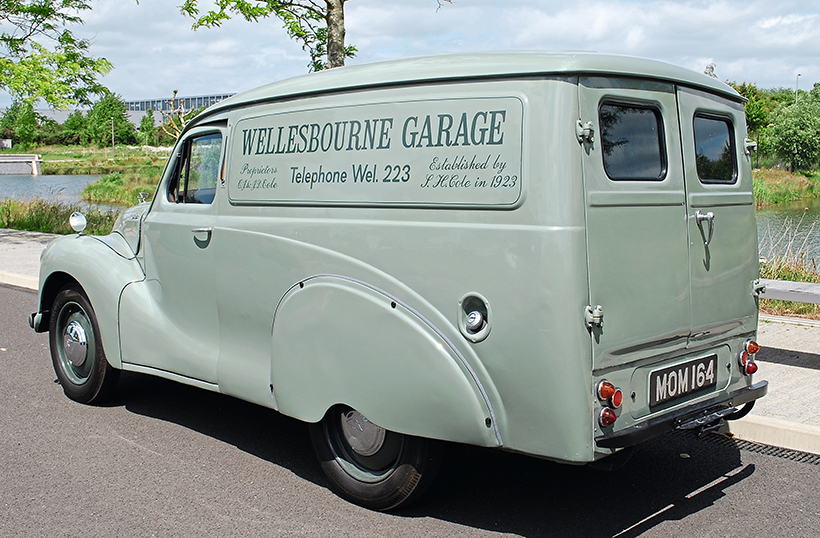
From the rear – and very stylish it is too! Wheel spats were deleted from later vans.
The van’s roof, sides and wheel spats are all aluminium, whilst the front end, front doors, back doors and sills are steel. “There’s a joint between the steel and aluminium at the top of the windscreen, but fortunately there was no corrosion between the two metals,” adds Chris. Later vans were all-steel construction, without wheel spats.
Chris and Joy once moved house taking everything in the A40 Van. Now they take it to car shows – it’s a regular visitor to the NEC Classic Car Show and to the Classic & Vintage Commercials show at Gaydon – as well as for trips to the shops and garden centre. “We recently took it to a car rally in Bedford, which is probably the furthest it has ever been!” laughs Chris.
This feature comes from a recent issue of Classic & Vintage Commercials, and you can get a money-saving subscription to this magazine simply by clicking HERE
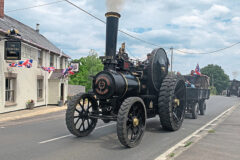
Previous Post
Fine 1902 Fowler B5 returns home from New Zealand

Next Post
The amazing history of truck builder, Thornycroft



